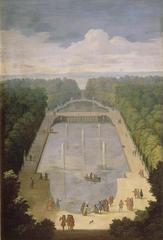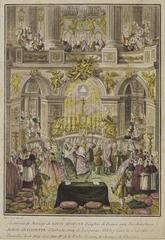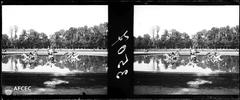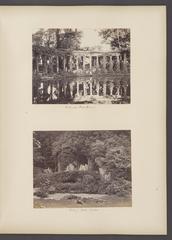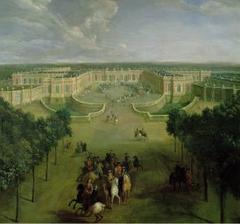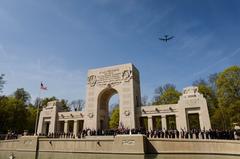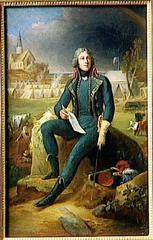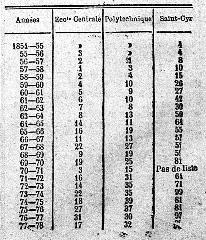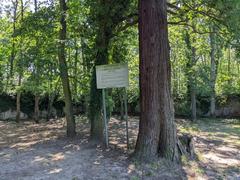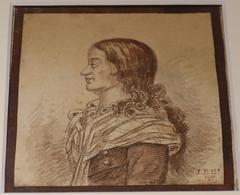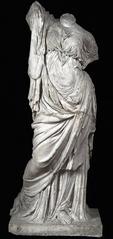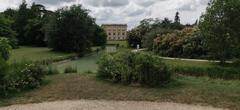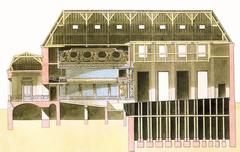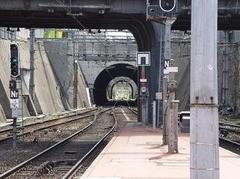
Visiting Cimetière des Gonards, Versailles: Comprehensive Guide to History, Visiting Hours, Tickets, and Tips
Date: 04/07/2025
Introduction
Nestled on the outskirts of Versailles, the Cimetière des Gonards is much more than the city’s largest burial ground; it is a serene and culturally significant destination that offers a unique journey through history, art, and ecology. Established in 1879 during a period of rapid urban development, the cemetery spans approximately 130,000 square meters and was designed to reflect 19th-century ideals of blending natural beauty with solemn remembrance. Today, it stands as a testament to Versailles’ diverse heritage, military history, and commitment to sustainable management (Versailles Tourism).
With its winding tree-lined paths, notable architectural monuments, prominent graves, and pioneering ecological initiatives, the Cimetière des Gonards invites visitors to explore Versailles’ layered past and vibrant present. Whether your interests lie in history, art, or nature, this comprehensive guide provides all the practical information and context you need to make the most of your visit.
Table of Contents
- History and Origins
- Architectural and Artistic Features
- Military and International Graves
- Diverse Religious and Cultural Sections
- Notable Burials
- Ecological Innovation and Biodiversity
- Visitor Information: Hours, Tickets, Accessibility
- Guided Tours and Special Events
- Nearby Attractions in Versailles
- Practical Tips for Visiting
- FAQ
- Conclusion and Recommendations
- Sources
History and Origins
The Cimetière des Gonards was founded in 1879 to address the need for new burial grounds outside the crowded city center. Its design follows the 19th-century trend of landscaped cemeteries, providing not only a place for remembrance but also a tranquil urban green space. The upper plateau, lined with mature trees, offers panoramic views of Versailles and embodies the cemetery’s original philosophy of harmony between nature and reflection (Versailles Tourism).
Since its inception, the cemetery has expanded and evolved to reflect changes in Versailles’ population and broader French society, serving as a witness to the city’s historical and cultural transformations.
Architectural and Artistic Features
Art Nouveau Chapels and Funerary Sculpture
- Devos-Logie and Mirand-Devos Chapels: Designed in 1894 by Hector Guimard, renowned for his Art Nouveau Paris Métro entrances, these chapels are architectural gems that mark the cemetery’s landscape.
- Oyley Chapel: Notable for its recumbent effigy, showcasing the artistry of funerary monuments.
- Ange du Silence (“Angel of Silence”): A recently restored sculpture that stands as a symbol of the cemetery’s artistic heritage (Journées du Patrimoine).
- Bronze Medallions and Sculptures: Personalize graves and reflect the cemetery’s diverse social tapestry.
The cemetery’s layout, with its winding paths, old-growth trees, and separation into various sections, reflects both its historical roots and ongoing commitment to beauty and contemplation.
Military and International Graves
The Cimetière des Gonards is a significant site of military memory in Versailles:
- German Military Graves: 534 graves from both World Wars, marked by pink granite stelae and a dedicated monument (WW1 Cemeteries).
- Commonwealth War Graves: 181 British and Commonwealth soldiers from both World Wars are buried here, their graves maintained to international standards.
- French Service Personnel Memorial: A monument honoring French soldiers buried in North Africa.
These sections serve as poignant reminders of the shared European and global histories that converge in Versailles.
Diverse Religious and Cultural Sections
Reflecting the cosmopolitan character of Versailles, the cemetery includes:
- Jewish Sections: Located in “L sud” and “L ouest,” highlighting the diversity of the city’s past.
- Protestant and Anglo-American Graves: Many English and American Protestant burials, as well as numerous international residents, are found here (versailles.touristik.fr).
Distinct areas for different communities illustrate the patterns of migration and cultural exchange that have shaped Versailles over the centuries.
Notable Burials
Cimetière des Gonards is the final resting place for many distinguished individuals from various walks of life:
- Louis Blériot (1872–1936): Aviation pioneer, first to cross the English Channel by air.
- Louis-François Cartier (1819–1904): Founder of the Cartier jewelry house.
- Louis Lépine (1846–1933): Paris Prefect of Police, originator of the Lépine innovation competition.
- Edith Wharton (1862–1937): Pulitzer Prize-winning American novelist.
- Marc Allégret (1900–1973): Influential filmmaker.
- Robert de Montesquiou (1855–1921): Poet and art collector.
- Abolhassan Bani Sadr (1933–2021): First President of Iran after the 1979 revolution.
- Henri Désiré Landru (1869–1922) & Eugène Weidmann (1908–1939): Notorious criminals, both buried in unmarked graves (cimetieresdumonde.e-monsite.com; landrucimetieres.fr; Wikipedia).
Each grave tells a story, contributing to the cemetery’s status as an open-air museum.
Ecological Innovation and Biodiversity
EcoJardin Certification
Since 2009, Cimetière des Gonards has pioneered sustainable management by eliminating chemical products, earning the EcoJardin label in 2012 as France’s first cemetery to receive this recognition (Versailles City).
Biodiversity Initiatives
- Wildflower Meadows and Native Plantings: Encourage pollinators and biodiversity.
- Biodiversity Pond (2021): A new 90 m² pond attracts amphibians, birds, and small mammals, furthering the site’s ecological value (Versailles City).
- Community Engagement: Educational activities and citizen science projects involve residents and schools in monitoring biodiversity (Journées du Patrimoine).
These efforts make the cemetery a model for urban green space management and environmental stewardship.
Visitor Information: Hours, Tickets, Accessibility
- Opening Hours: Daily from 8:00 AM to 6:00 PM (April–September), and 8:00 AM to 5:00 PM (October–March). Summer months may see extended hours.
- Entry Fee: Entrance is free.
- Accessibility: Main paths are wheelchair accessible; some older sections may have uneven terrain.
- Location: 5 Avenue du Général de Gaulle, Versailles. Easy access via RER C (Versailles Chantiers or Rive Gauche stations), local buses, and on-site parking.
- Facilities: Restrooms and information panels are available; most paths are paved.
Guided Tours and Special Events
- Guided Tours: Regular thematic tours focus on history, art, or biodiversity. Offered during heritage days like Journées du Patrimoine and Printemps des Cimetières. Advance registration is recommended for these free tours (Journées du Patrimoine).
- Educational Activities: Biodiversity inventory walks and participatory ecological events engage visitors of all ages.
Nearby Attractions in Versailles
Enhance your visit by exploring other nearby sites:
- Palace of Versailles: The city’s world-famous château and gardens.
- Versailles Cathedral: A masterpiece of French religious architecture.
- Potager du Roi: The historic kitchen garden.
- Royal Opera and Grand Trianon: Additional cultural highlights.
These attractions add depth to your understanding of Versailles’ rich heritage.
Practical Tips for Visiting
- Footwear: Wear comfortable shoes for walking.
- Photography: Allowed, but be respectful, especially near active graves or during ceremonies.
- Wildlife Respect: Stay on designated paths and avoid disturbing animals or picking plants.
- Children: Many tours are suitable for visitors aged 6 and above.
FAQ
What are the visiting hours?
Open daily from 8:00 AM to 6:00 PM (April–September), 8:00 AM to 5:00 PM (October–March). Check local websites for updates.
Is entry free?
Yes, there is no entrance fee.
Are guided tours available?
Yes, especially during heritage and ecological events. Advance booking is recommended.
Is the cemetery accessible for visitors with disabilities?
Main paths are accessible, but some sections may be uneven.
Can I visit the biodiversity pond?
The pond is not open to the public except during guided tours, to protect wildlife.
How do I get there by public transport?
Take the RER C to Versailles Chantiers or Rive Gauche stations; local buses stop nearby.
Conclusion and Recommendations
Cimetière des Gonards is a multifaceted site where history, art, remembrance, and ecology converge. Its notable burials, architectural masterpieces, military memorials, and sustainable practices create a unique cultural landscape in Versailles. Whether you come to pay respect, admire funerary art, or enjoy ecological initiatives, the cemetery offers a contemplative and enriching experience.
Pair your visit with other Versailles attractions for a comprehensive cultural journey. For the latest information on events and tours, consult official tourism websites and consider downloading the Audiala app for audio guides and updates.
Sources
- Visiting Cimetière des Gonards in Versailles: History, Architecture, and Practical Information, 2025, Versailles Tourism (Versailles Tourism)
- Discovering Cimetière des Gonards: Visiting Hours, Tickets, and Historical Significance in Versailles, 2025, Journées du Patrimoine (Journées du Patrimoine)
- Notable Burials and Artistic Heritage, 2025, Versailles Official Site (Versailles.fr)
- Cimetière des Gonards Visiting Hours, Tickets, and Ecological Tours in Versailles, 2025, Versailles City (Versailles City)
- Military War Graves at Cimetière des Gonards, 2025, WW1 Cemeteries (WW1 Cemeteries)
- landrucimetieres.fr
- cimetieresdumonde.e-monsite.com
- Wikipedia


























